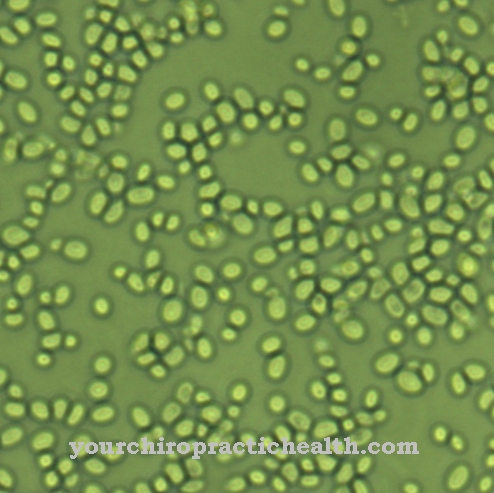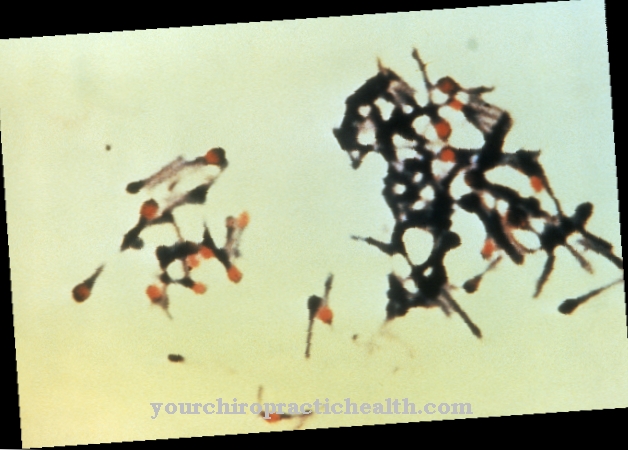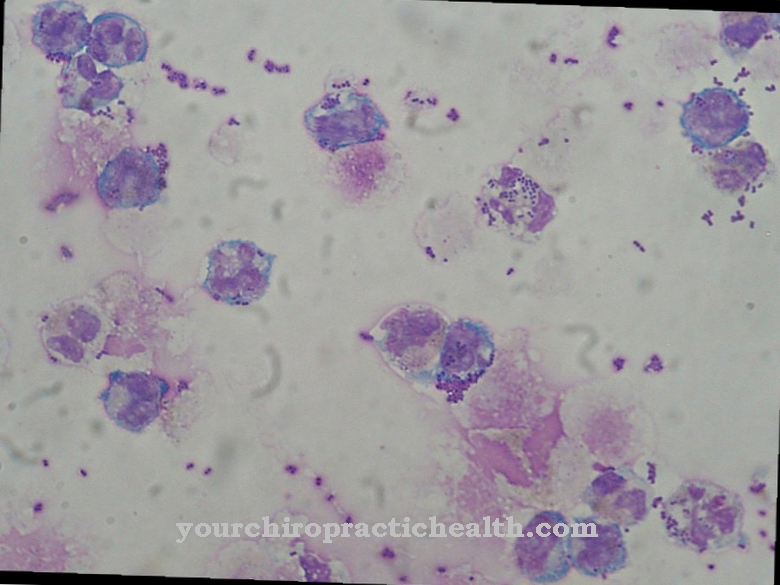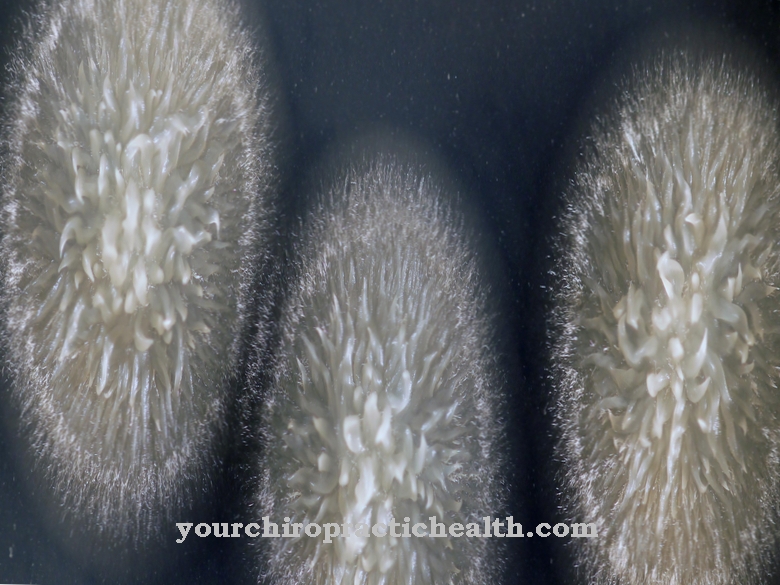Plasmodia are malaria pathogens in the saliva of the Anopheles mosquito, when they are bitten they are transmitted to the human host and multiply in it parasitically. Plasmodium ovale is one of four malaria pathogens. Like Plasmodium vivax, the parasite Malaria Tertiana excites with a mild course.
What is Plasmodium ovale?
Plasmodia are unicellular parasites that belong to the sporozoa group. Since the new system, they belong to the Apicomplexa tribe. All plasmodia live in the saliva of the female Anopheles mosquito. They are all clinically relevant as the causative agent of malaria.
Malaria pathogens such as Plasmodium ovale colonize the red blood cells in their hosts and feed on hemoglobin. The red blood pigment is converted into hemozoin by plasmodia such as Plasmodium ovale. In the populated erythrocytes, this transformation appears as a brownish black pigment.
The red blood cells disintegrate as a result of the colonization, releasing toxic breakdown products that have an effect on the patient's central nervous system.
Plasmodium ovale is one of four unicellular pathogens that cause malaria tertiana. In western regions the distribution is low. The pathogen occurs more frequently in tropical regions. Tertiana malaria is a benign form of the disease. The pathogen Plasmodium ovale is associated with cases of infection less often than the related Plasmodium vivax. The main distribution area of the pathogen is western Africa in the south of the Sahara. The pathogen can also be found in Thailand or Indonesia. The Anopheles species relevant for transmission are the species gambiae and funestus.
Occurrence, Distribution & Properties
All plasmodia change from sexual to asexual reproduction and back again in the course of their existence. They go through generation changes that are accompanied by a simultaneous change of host. The pathogens migrate from the salivary glands of the transmitting mosquito into humans and are finally taken up again by a mosquito from the human blood. The circle closes.
In humans, the pathogens initially live in a phase of schizogony. They enter the human organism as sporozoites and reach the tissue of the liver. There they colonize the hepatocytes, where they transform into schizonts. The schizonts disintegrate into merozoites, which penetrate from the liver into the blood.
Once in the bloodstream, Plasmodium ovale attacks the red blood cells in its persistent forms. Within the cells, the pathogens develop into so-called blood schizonts, from which merozoites arise again. A certain proportion of them do not turn into schizonts, but undergo differentiation into microgametocytes or macrogametocytes. Gamonts are transmitted back to the next mosquito that bites the infested host.
The gamonts mature in the mosquito's intestinal tract. Fusion occurs in an act of sexual reproduction. This creates a zygote that infiltrates the intestinal wall of the infected mosquito. As a result, an oocyst forms. From this point on, asexual division takes place. Up to 10,000 sporozoites are formed in this way. The individual sporozoites are released as soon as the oocysts burst. They reach the salivary glands of the infected mosquito and are thus transmitted to the next person. The cycle continues.
As usual for Plasmodia, the Plasmodium ovale goes through different stages of development. Liver schizonts are rounded or oval in shape and reach around 50 micrometers. The individual merozoites of the schizonts are over a micrometer in size. Some cells are infected several times by the Plasmodium ovale. As soon as trophozoites form, the host's red blood cells swell. In addition to the increase in size, there is the typical coloration, the Schüffner stippling.
Illnesses & ailments
Plasmodia of the species ovale are obligate human pathogens of malaria tertiana. After the mosquito bite, there is an incubation period during which the patient does not show any symptoms. This time can extend over 18 days. Since those affected have often undertaken chemoprophylaxis based on medical recommendations, the incubation period can even extend over weeks or months.
After the incubation period, those affected develop a cyclical fever. The fever attacks are interrupted by fever-free days. At the beginning of every fever attack there is the so-called frost phase, which lasts barely an hour. In the freezing phase, the body temperature begins to rise rapidly. The subsequent heat phase lasts about four hours and is characterized by excruciating burning sensation, severe nausea, vomiting and exhaustion. The body temperature of those affected often reaches heights of 40 degrees Celsius.
Sweats occur in the third phase, which lasts three hours and is accompanied by a gradual normalization of temperature. In this third phase, patients recover step by step until another fever attack sets in.
The malaria tertiana of the Plasmodium ovale leads only in the rarest of cases to acutely life-threatening conditions. So far, preventive vaccinations are not available for forms of malaria. To prevent this, travel plans to high-risk areas for malaria should be avoided if possible. One possible preventive measure is chemoprophylaxis.
In addition, travelers in the relevant areas must at least bring malaria medicines with them. Quinine is known as a drug against malaria and helps kill the schizonts in the blood of infected people. Quinine can improve the general condition of a malaria patient accordingly.
Synthetic drugs are also available against malaria. Malaria pathogens such as Plasmodium ovale are now immune to many synthetic anti-malarial drugs. For this reason, quinine is used all the more nowadays.

















.jpg)



.jpg)

.jpg)




